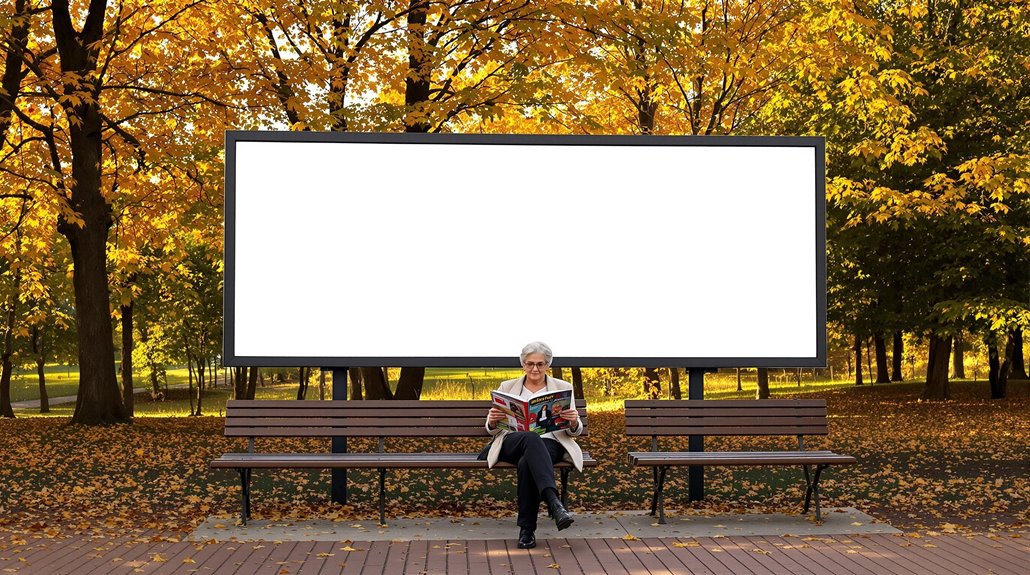When ads are quiet, they grab our attention better. Many of us look at our phones during TV breaks. Quiet ads fit well with how we watch TV now. These ads let us see important things like prices and phone numbers better because there's no noise to distract us.
Silent ads tell stories through pictures and colors. They make us feel connected to brands without saying a word. Studies show that people like quiet ads more. In fact, quiet ads get 85% more people to watch and remember them.
Are Your Ads Not Getting Results?
A good CRM helps you track who sees your ads and what they do next. It saves time by doing the busy work for you. You can see which ads work best and make smart choices about where to spend your money. Plus, you'll never lose track of a customer who wants to buy from you.
Try These Smart Marketing Tools Free For 14 Days
Key Takeaways
People pay closer attention when ads are quiet. They can better remember things like prices and phone numbers.
Many of us watch videos on our phones. We like ads that don't blast sound at us or make us feel tired.
When ads are quiet, they touch our hearts more. We feel closer to the brands we see and remember them longer.
Quiet ads need strong pictures to tell their story. This makes the message clear and easy to understand.
Most people look at their phones while watching TV. Quiet ads fit in better with how we use many screens at once.
The Power of Silence
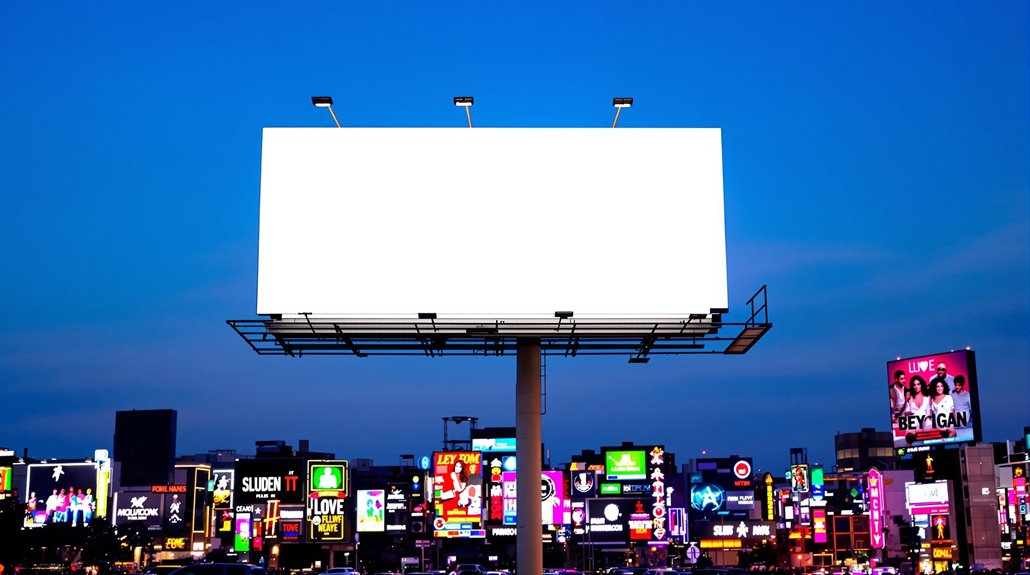
Silence in ads does something special to our brains. When an ad goes quiet, we pay more attention. We notice things like prices and phone numbers better. The quiet makes these details stick in our minds.
Think of silence like a tool. It's not just empty space – it makes us feel things. When an ad gets quiet, we lean in closer. We want to know what comes next.
The quiet parts help us feel more of what the ad wants us to feel. When we watch these ads, each quiet moment has a job. It makes us care more. It helps us remember what we saw.
Understanding Consumer Viewing Habits
TV is a big part of how we spend our free time. Almost everyone in America watches TV shows – that means 96 out of 100 people. Most of us watch about 3 hours of TV each day.
We spend money on TV shows too. Many of us pay about $89 each month to watch shows and movies online.
Here's how we watch TV now:
- Most of us still watch regular TV shows on our TV sets. We watch about 2 hours this way.
- Many people also watch shows online. We do this for about 1 hour and 20 minutes.
- Some of us like to watch many TV show parts at once.
- Half of us think we pay too much for TV shows.
People watch TV in different ways now. We can watch on our TV sets, phones, or computers. We can watch when we want to watch.
Silent Marketing Success Stories

Marketing can be gentle and still work well. Think of Nike showing regular people working hard to reach their goals. Or Dove showing real women of all shapes feeling beautiful.
These brands don't push you to buy things. They tell stories that make you feel something.
Companies like Patagonia and IKEA also do this well. They share pretty pictures and talk about what they care about.
They don't use loud ads or pushy sales talk. Instead, they send nice messages that fit into your daily life.
They talk to you like a friend would. They share stories from happy customers. They text you only when it matters.
Creating Engaging Soundless Content
Making videos without sound is like telling a story with pictures. Just as you use your face and body to show how you feel, videos need clear movements and bright colors to share their message.
Words that pop up on screen should move smoothly, like turning the pages of a book. Use big, easy-to-read text at the bottom of the video so everyone knows what's going on.
This helps people who watch with no sound or those who can't hear well still follow along.
Visual Storytelling Elements
Pictures tell stories without words. Let's look at what makes them work well.
Colors make you feel things. Think of how red makes you excited or blue makes you calm.
Words need to look good and be easy to read. Put them where people can see them best.
The way you place things matters. Your eyes should know where to look first, then next.
Use pictures that show what's happening. Don't just say it – show it!
Add short bits of text at the right time. This helps people follow along.
When you use these parts well, your story will grab people's hearts. Most people watch videos with no sound on their phones these days. That's why good pictures are so important.
Tips:
- Pick colors that match your story's feeling
- Make words big and clear
- Put things where eyes want to go
- Show, don't tell
- Keep text short and sweet
Sick of wasting hours on marketing that doesn’t pay off?
What if you could skip the hard work and still grow your business?
Automate your marketing and see how easy it can be to save time and close more deals.
Discover the simplest way to take charge of your business!
Motion Design Tips
Motion helps tell better stories in videos – even without sound. When you make videos people watch with no sound, keep things simple and clear. Use big words on screen to share your message. Make sure everything moves smoothly so people stay interested.
Your videos should work well for everyone. Use clean, sharp pictures and easy-to-read text. Think about where people will watch your video – like on phones or in busy places. Make sure it looks good no matter where someone sees it.
Keep the same style from start to finish. End with a clear next step for viewers to take.
Visual Storytelling Techniques
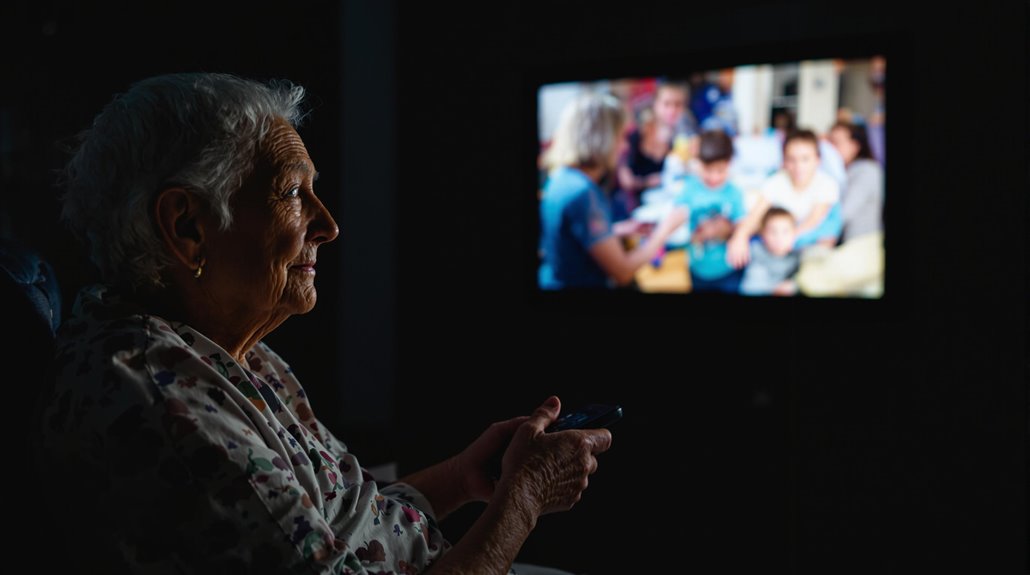
Pictures tell stories better than words in ads without sound.
Simple movements catch people's eyes and keep them watching. Colors make people feel certain ways. Red can make them excited. Blue can make them calm.
When you use the right colors and movement, you can share big ideas without saying a word.
Show Don't Tell
Pictures say more than words. When you see something that moves you, it stays with you. That's why good photos and videos work so well.
Rather than saying how someone feels, show it:
- Pick photos that make people smile, cry, or care
- Tell a story step by step with pictures
- Add little details in the background that matter
- Show scenes people know from their own lives
- Make it easy for eyes to follow the story
Think of it like this – a photo of a happy child hugging their dog tells more about love than writing "they were happy."
When you show things this way, people feel it in their hearts.
Motion Drives Engagement
Moving pictures grab your eye better than still ones. Most people only pay attention for about 8 seconds. That's why you need motion to tell your story well.
Moving pictures mix bright colors, words, and voices to make fun content people want to share.
When things move in your content, you do more than just show facts. You make ideas come alive. Motion helps people feel things and understand big ideas better.
When you make special moving content that fits your brand, people connect with it more. They stop just watching and start being part of your story.
Color Psychology Matters
Colors shape how we feel and what we buy. Most people pick things based on their colors before anything else. The right colors can tell your story in less than a second.
Tips for using colors well:
- Pick colors that match what people know. A lemon is yellow, an apple is red.
- Don't just use your logo colors in quick ads.
- Choose colors that make people want to act.
- Think about what people see first.
- Try new color mixes to see what works best.
Colors matter when making ads with no words. Good colors can make people like your brand more. They help people remember you. And they help you connect with the people you want to reach.
Legal Guidelines for Silent Ads
TV rules don't say much about quiet ads. They care more about loud ones. But quiet ads still need to follow some basic rules.
You can add soft sounds to quiet ads. A little music is OK too. Just keep these sounds as soft as the TV show around it.
TV police don't worry too much about one quiet ad. They look for lots of people saying there's a problem. If you want to make a quiet ad, make sure any sounds you add aren't too loud.
Measuring Silent Ad Performance
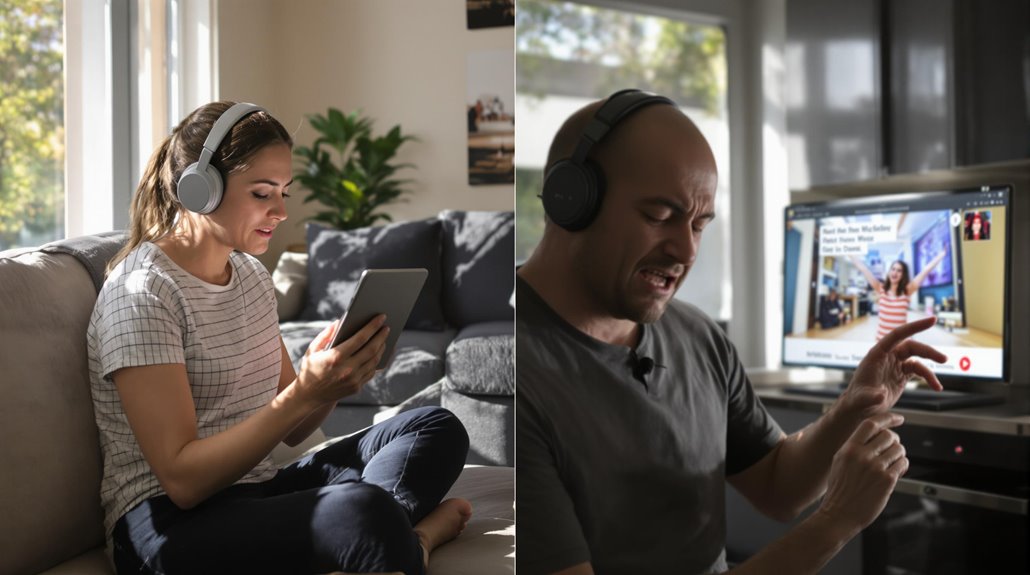
Watching how well your silent ads work is like keeping score in a game. We look at simple numbers that tell us if people like the ads.
Think of watching a movie – we want to know if people watch the whole thing or stop early. We also check if they click on the ad or buy something after seeing it.
Some key things we count:
- How much money we spend to show the ad
- How many people watch the whole video
- How many people buy something
- How often one person sees the same ad
- How much it costs to get a new customer
Big companies don't lose many sales when their ads are silent. Small companies might see fewer sales right away.
The best way to make silent ads work is to watch these numbers and fix what isn't working.
Remember: Just like checking your score in a game helps you play better, checking these numbers helps make better ads.
Psychology Behind Silent Advertising
Silent ads work in special ways that touch our hearts and minds. When we see ads without sound, our brains make strong feelings about them. These feelings help us like and remember brands better.
When ads are quiet, we can think about them more. Loud ads can be too much, but quiet ones let's take our time. We remember the main point better when an ad is gentle and soft.
With no noise to bother us, we can connect with what we see in a real way. This makes us trust the message more and feel good about what we see.
Design Elements That Work

Silent ads need simple design tricks to grab people's eyes without sound. The best silent ads use clean looks and soft colors. They keep things simple. Big, clear words on the screen help people follow along.
To make great silent ads:
- Keep them short (15-60 seconds)
- Make them fit phone screens
- Show clear, pretty pictures
- Tell people what to do next
- Show faces and moves that share feelings
Good silent ads mix simple art with deep feelings. This helps your message stick with people who watch without sound.
Brand Recognition Without Sound
We notice brands better when ads have no sound. Our brains can focus more on what we see when there's no noise.
Silent ads stick in our minds when they show clear pictures and words that tell us about the brand. We spot company logos faster in quiet ads because our eyes work better when our ears don't need to listen.
Visual Message Takes Priority
Pictures speak louder than words in today's ads. Big brands use simple pictures to catch your eye, even when there's no sound. They tell stories with images that make you feel something.
These quiet ads work well because:
- Clean colors and few words look classy
- Products fit in with what you're watching
- Pictures show feelings that make you trust the brand
- Simple designs help you get the point fast
- The message fits into your daily life
Many people watch videos with no sound, so these quiet ads work great on apps like Instagram and Facebook.
The best ads don't need to be loud or pushy – they just need to show you something that matters to you.
Memory Through Silent Impact
The brain loves quiet ads. When we see ads without sound, they stick in our mind better. Just like a peaceful walk, these ads use soft moves and nice pictures to tell a story. They don't yell or push us to buy things.
Quiet ads work well because our minds can focus better when things are calm. We remember brands more when they show us gentle images. It feels nice, like when a friend shares something sweet with us.
When ads don't try too hard to sell, we trust them more. This makes us like the brand for a long time, not just for a minute.
Logo Recognition Sans Audio
Logos tell us who a brand is without any sounds. Think of the golden arches – you know it's McDonald's right away! Most pictures with logos on social media don't need words to tell us what brand it is.
Companies use smart computer tools to find their logos in pictures all over the web. This works well because:
- Our eyes spot things faster than our ears hear them
- We know brand symbols in any country
- We can find brand marks even in busy pictures
- We see quiet brand signs all day on our phones
- Pictures stick in our minds better than sounds
This helps companies watch how people use their brand marks online and keep them safe, just by looking at pictures.
Platform-Specific Silent Ad Strategies

Silent ads work differently on each social media platform. Let's look at how to make them work best.
Instagram likes pretty pictures that fit in with what people share.
TikTok wants fun, short videos that follow what's popular.
LinkedIn needs smart business posts.
Twitter works with quick, eye-catching clips.
Facebook does well with posts that get people talking.
| Platform | Silent Strategy |
|---|---|
| Natural-looking photos and videos | |
| TikTok | Fun, trendy short videos |
| Smart business content | |
| Quick, catchy clips | |
| Posts that start conversations |
Pick the right style for each platform. Use beautiful photos on Instagram. Make short, fun videos for TikTok. Keep things professional on LinkedIn. Be quick and clear on Twitter. Get people talking on Facebook. This way, your ads will fit in better and work harder for you.
Social Media Silent Ad Impact
People watch social media without sound these days. Think about it – when you see a friend looking at Facebook, their phone is on mute. In fact, most people keep their phones quiet while scrolling.
This means we need to make ads that work without sound. Instead of using voice or music, we can use:
- Clear pictures
- Big text
- Easy-to-read words
Each social app is different. TikTok videos move fast. Facebook users like to scroll in silence. So we need to make our ads fit how people use each app.
When we make ads this way, more people stop to look at them. They click, share, and remember what they see – all without turning up the volume.
Engagement Without Sound Matters
Most people now watch social media videos without sound. This has changed how companies make ads.
Silent videos work better at getting people's attention. They use:
- Big words on the screen
- Captions that tell the story
- Pictures that explain things clearly
Many people watch videos in quiet places like buses or at work. They can't turn on the sound, but they still want to watch.
Companies can make these silent videos faster and cheaper. This means we see more videos from brands we like.
Everyone can understand these videos, even people who are deaf or hard of hearing. This makes watching videos fun for all.
Studies show that silent ads work really well. People remember them better than ads with sound.
Platform-Specific Silent Strategies
Silent videos work differently on social media platforms. When you make videos for social media, you need to think about how people watch them.
Most people watch Facebook without sound. That's why many ads work well without any noise. Hotels.com found this out when their quiet ads got five times more views.
Think about each platform:
- Facebook: Most people (85%) watch with no sound
- Instagram: People like pretty pictures with words on them
- TikTok: Short, quick videos work best
- Stories: Tall videos with words at the bottom work well
When you make videos for social media, pick the right way for each app. This helps more people see and like your content.
Common Silent Ad Mistakes
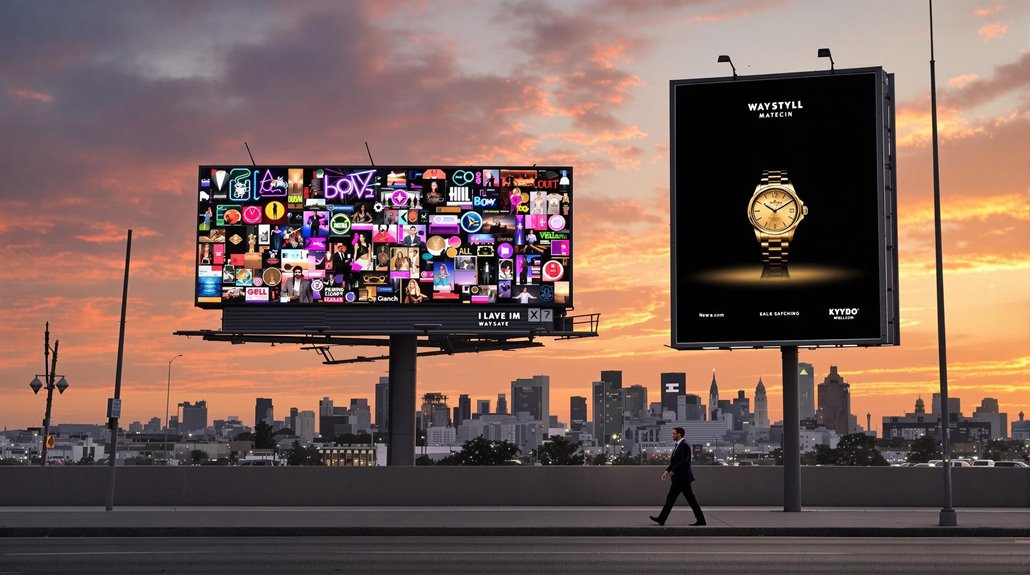
Silent ads can be tricky to make. Let's look at common mistakes to avoid.
First, many people skip learning about their viewers. This means they send the wrong message to the wrong people.
Second, some ads try too hard to sell things. Instead, tell stories that make people feel something real.
Third, don't just make one ad. Try different ones to see what works best.
Fourth, always track how well your ads do. Use special codes or QR codes to see who watches them.
Last, show your ads more than once. People need to see things many times to remember them.
When you fix these mistakes, your silent ads will work better. They'll help people know and trust your brand.
Future of Silent Advertising
Silent ads are changing fast as more people use phones and tablets. Smart computers help make ads that feel more personal to you. They show you things you care about.
Ads are getting quieter and smoother. They use soft colors and simple words that everyone can read. You might see gentle moving pictures with big, clear words on them. These ads work well in any country.
When you scroll through apps and websites, these quiet ads fit right in with other posts. You barely notice they're ads.
This new way of showing ads without sound is here to stay, as most people now use their phones to see content.
Return on Investment Analysis
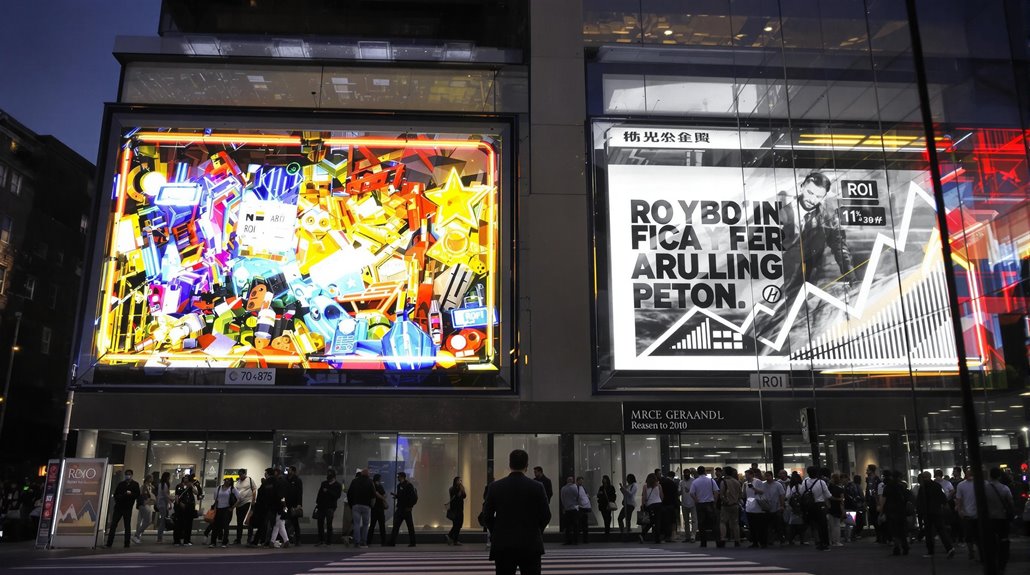
Ads can make or break a business. Looking at how well ads work shows that quiet ads do better than loud ones. People often look at their phones when TV ads come on. This means we need smart ways to reach them.
Quiet ads help because:
- People get tired of seeing the same loud ads over and over
- Sales drop when companies stop showing ads
- People watch ads that matter to their lives
- Simple messages like emails work well
- We can track how well ads work by looking at who buys
The numbers tell us:
- 8 in 10 people use phones during TV ads
- 3 in 10 think regular ads are too much
- 7 in 10 watch ads about things they like
- Each dollar spent on email ads brings back $36
Using tools like Google helps us see if our ads are working. The best ads speak to people in a clear, soft way that fits their needs.
Conclusion
Have you noticed more videos playing silently on social media? You're not alone. Most people watch Facebook videos with no sound at all – about 85 out of 100 videos!
Silent ads work better because they fit how we use our phones today. People scroll through feeds at work, on the bus, or in bed. They don't want loud sounds surprising them.
The best silent ads use:
- Clear pictures that tell a story
- Easy-to-read text
- Short, simple messages
- Eye-catching movement
To make good silent ads:
- Show what you mean instead of saying it
- Write short captions that grab attention
- Check how well your ads work
- Make them better based on what you learn
The best ads today don't need sound to get their message across. They just need to catch your eye and make you understand.
Stop Losing Track of Your Marketing Campaigns
Managing multiple ad campaigns can get messy fast. A good CRM helps you track all your marketing in one place. You'll see which ads work best, follow up with leads faster, and save hours of work each week. Ready to get organized? Try this powerful CRM free for 14 days and watch your marketing become easier to manage.

